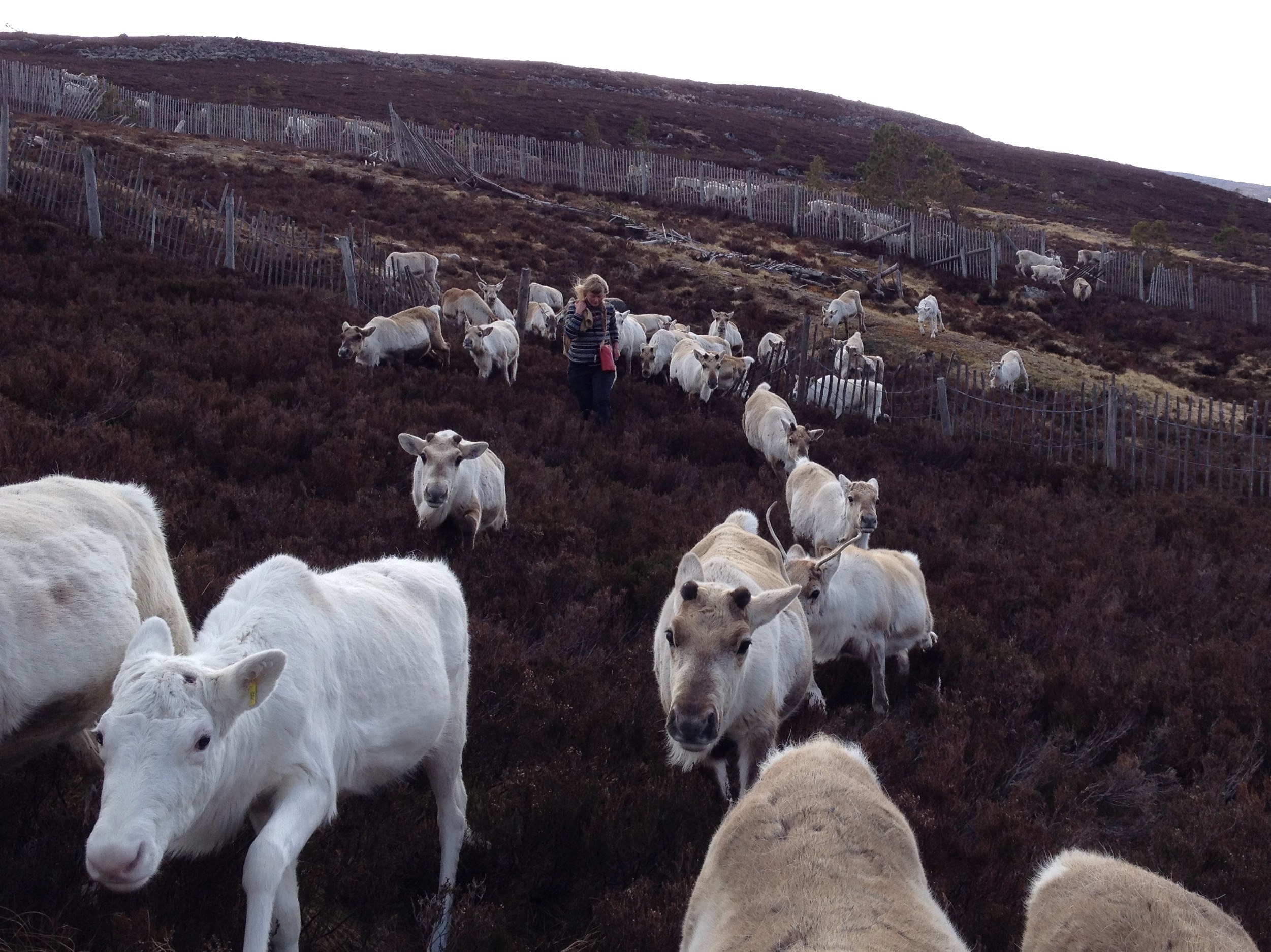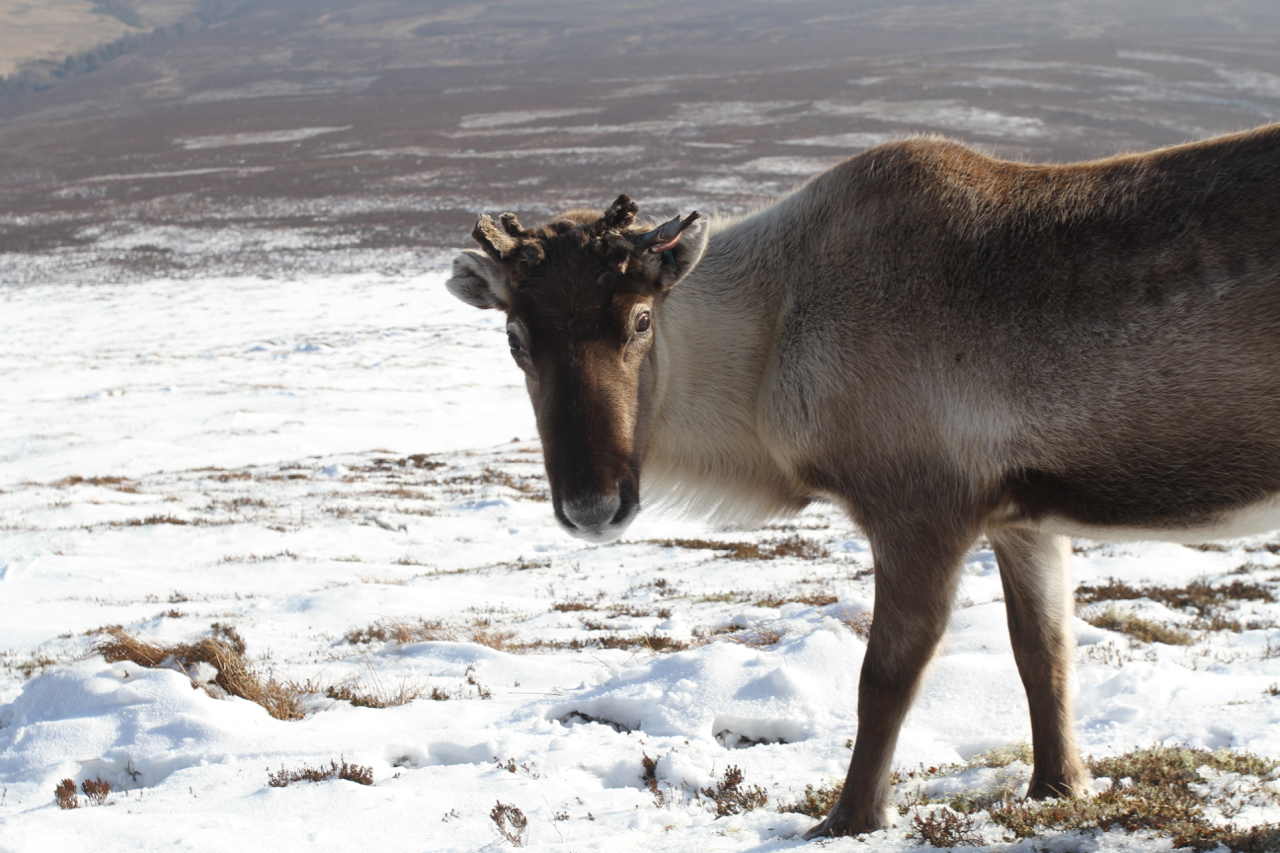Visitors are often surprised to find that every reindeer in our 150-strong herd has a name, and borderline astounded that we can identify them all at a glance. It’s important to us that we do know them as well as we do, as if one is a little under the weather it means we can all know who to keep an eye on. I thought I’d try to explain a little some of the features that help us work out just who is who.

First up, and perhaps most obviously, reindeer vary in colour. This is most apparent in summer, when they have shorter, richer coloured coats, and hardest in late spring when the elements have bleached their thick winter coats to a pale washed out cream. Domestication has led to reindeer coming in all colours – pure white through to almost black, some with white facial markings and an occasional one with white on other parts of their body. People have a tendency to select for interesting colours, whilst nature does the opposite and tends towards normality, hence the caribou of North America (which have never been domesticated) show little variation.

The next big pointer (though only for part of the year) is the shape and size of the antlers. Reindeer are unique amongst deer species in being the only one where females and calves grow antlers as well as the males. The size of the antlers is determined chiefly by age – getting bigger each year until their prime and then smaller again – and also by body condition – a reindeer in poor condition will only grow tiny antlers. The shape is determined genetically, which is very helpful to us herders – once you learn the shape of an adult’s antlers, you have a good chance of recognising the antler shape the following year. Unfortunately antlers aren’t something you can rely on too much though, as every year they fall off to make way for a new set. Once we get to about April we are confronted by a sea of antler-less reindeer, and it’s a real test of how well you actually know them!

Character is a big part of working out who is who – certain reindeer will always be mugging you for food, whilst others prefer to keep their distance. Approaching an unknown reindeer with a handful of food will often narrow down who they could be – some will turn away whilst others will come charging over. Thankfully character changes very little from season to season and year to year, so it’s a good marker.

Once you’ve worked with the herd for a few years, you start to recognise certain reindeer by their individual face shape, their mannerisms, or just a particular ‘look’ that they have. This can be the most awkward thing to try to explain to a new herder who is learning the names – “Why is that Lilac?” “It just… is…” It took me over a year of working here before I suddenly recognised the resemblance in a particular family line – there is a silvery tint to their coats that, once you’ve seen it, is very obvious. It can be great fun watching as youngsters mature into adults and suddenly looking at them one day and realising they look just like their mum! I often catch myself glancing round the hillside and rattling off names when I’ve only seen part of a reindeer – you learn to trust your instincts! You know you’ve worked here too long when you can guess with confidence who the reindeer silhouetted half a mile away is!

Finally, if you can get close enough, every reindeer has a unique ear tag. We use a different colour for each year, so even from a distance you can usually see which year they’re from. There is then a number on each tag, though these aren’t always so easy to read, especially on shy reindeer with hairy ears – there can be a lot of peering at them through binoculars, or occasionally taking a photo so you can zoom in on it!
So there you are – it’s not really as impressive as it sounds, and even most of our summer volunteers surprise themselves with how many reindeer they can name after a week – we give them a ‘herd list’ which they annotate with comments to help them remember distinctive features – “really greedy”, “tiny antlers”, “pointy ears”. I’m always reminded of sheep farmers who can identify individuals out of (to me) identical faces, and it really shows that, given enough time and effort you really can work out the little differences in anything. It’s perhaps a sign that I need to get out more, but I’m pretty proud that I know the reindeer as well as I do.
Andi
